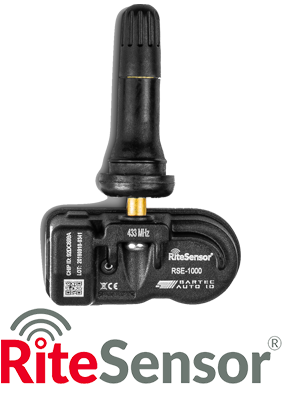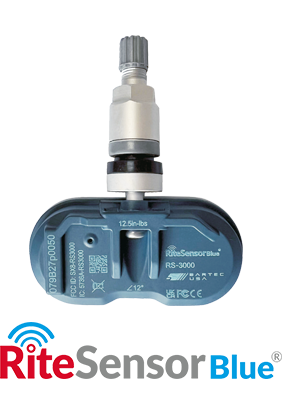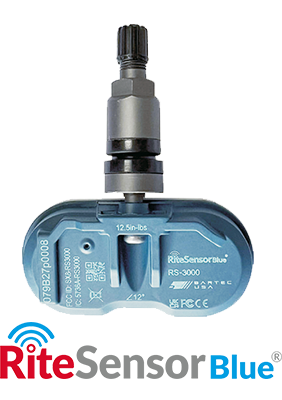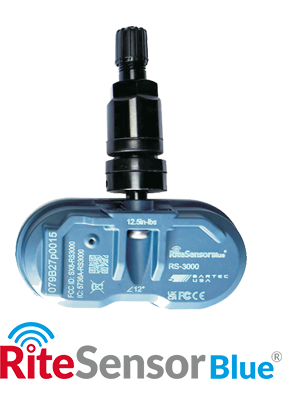TPMS Sensors
TPMS Sensors - Bartec Auto ID is long known for their independent view of TPMS replacement sensors. There are many types and variants available today, affording the end user many options. The Rite-Sensor® is our market leading programmable TPMS Sensor.
Rite-Sensor® is Bartec’s programmable, single part, replacement aftermarket TPMS Sensor.
- The RS1000 Rite-Sensor® comes assembled with a rubber snap-in valve
- Optional Aluminium clamp-in stem is included, assembly required
- Designed for optimum compatibility with OE and aftermarket wheels - no adjustment necessary
The Bartec Rite-SensorBlue® with Silver Stem is the latest development of our range of Rite-Sensor® Programmable Replaceable TPMS Sensors.
- The RS3000 Rite-SensorBlue® comes pre-programmed with current MMY coverage for Tesla Model Models 3, S, Y & X
- TPMS Sensor can be programmed to add new MMY coverage
- Clamp-In stems available in silver with a long battery life
The Bartec Rite-SensorBlue® with Graphite Stem is the latest development of our range of Rite-Sensor® Programmable Replaceable TPMS Sensors.
- The RS3000 Rite-SensorBlue® comes pre-programmed with current MMY coverage for Tesla Model Models 3, S, Y & X
- TPMS Sensor can be programmed to add new MMY coverage
- Clamp-In stems available in graphite with a long battery life
The Bartec Rite-SensorBlue® with Black Stem is the latest development of our range of Rite-Sensor® Programmable Replaceable TPMS Sensors.
- The RS3000 Rite-SensorBlue® comes pre-programmed with current MMY coverage for Tesla Model Models 3, S, Y & X
- TPMS Sensor can be programmed to add new MMY coverage
- Clamp-In stems available in black with a long battery life




